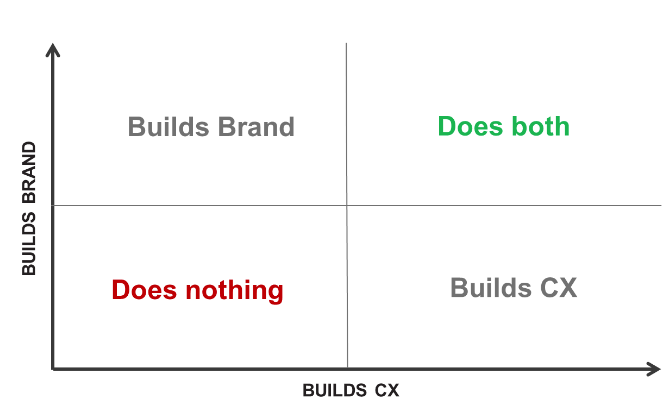Tackling touchpoints – making the most out of memorable brand experience
Share
Gone are the days when retail marketing touchpoints were only steps in the path to purchase. Kantar TNS’ Jon O’Loughlin and Ryan France lay out how brands should tackle their touchpoints in the age of the ‘experience economy’.

Jon O’Loughlin
Eleven of Australia’s top 40 most valuable brands in WPP and Kantar Millward Brown’s (KMB) BrandZ ranking are retailers – the most of any category. In almost all categories measuring brand strength, Bunnings ranks as the best of the best in communicating uniqueness, garnering love that consumers have for the brand and implementing innovative retailing strategies.
In fact, based on BrandZ metrics, Bunnings is quantitatively the healthiest brand in Australia and a great example for other companies in how to improve on the key indicators for brand health, meaningful difference and overall brand value.
While this retailer appears to have found the ‘secret sauce’ for optimising its brand value through the delivery of great customer experiences, we know this is more difficult to achieve than it looks. In rising to the top, each brand has invested millions of dollars in trialling new experiences to find out that they actually don’t deliver the required ROI and are subsequently dropped. This is part-and-parcel of ambitious growth plans for any retailer.

Ryan France
Cast your mind back just 10 years to when retail marketing touchpoints were steps in the path to purchase. They were passive and pre-determined. They lined-up in a regimented order with particular remits based on assumptions about when people would use them and what they would use them for. In CX, where touchpoints represented the moments where businesses and their customers interact, those moments were almost always defined and planned by the business itself.
Fast forward to today’s ‘experience economy’ and your customers are witnessing an explosion in touchpoints. Adding to this, customers now determine for themselves how, where, when and why they use retail networks. So, how do you build a branded experience with so much complexity and constant change?
Where impact happens
The starting point is to get a 360-degree view of your customer. This includes all paid, earned and owned touchpoints, which are then mapped against the customer journey. Critically, to avoid being overwhelmed by old-school ‘journey mapping wallpaper’ we use customer decision pathways. These break the journey into decision gateways, identifying the touchpoints customers use when moving from one decision gateway to the next. This data is then used to establish which are the moments that matter, and which touchpoints have greatest impact on brand and experience.
Kantar TNS Connect studies show that 25% of brand impact is delivered by paid media and the remaining 75% comes from owned and earned touchpoints. While this will vary by category and by brand, the following two provide solid direction:
- Branded experiences must be memorable
As a starting point, the experience you create must be consistent across all your touchpoints. Secondly, it needs to be differentiated through a unique association to the brand. Lastly, it needs to be memorable through the delivery of emotive moments that matter. Whether they are brand or experience specific touchpoints, these principles apply across the board. - Adapt to a world where brands, experiences and purchase journeys are self-assembled
Customers will not necessarily follow your internal processes. In fact, rigid application of processes when dealing with customers is far more likely to alienate customers than to reassure them. To keep up, you need to be attuned to all of the different roles that each touchpoint could play, free your touchpoints from the internally categorised silos (customer experience touchpoints versus shopper touchpoints versus brand touchpoints) and start building a unified understanding based on the meaning of different experiences to people. Be prepared to listen and respond to touchpoints as much as you must be ready to activate them.
Fierce competition from aggressive price-cutters – sound familiar?
At Kantar TNS, we worked with a UK grocery retailer facing that very situation. The company was keen to uncover the best strategy to defend their well-established brand and to understand which elements of the experience, both in and out of store, could help reinforce their brand message.
Besides traditional media touchpoints, a variety of in-store touchpoints were included to enable a measure of both the client’s and its competitors’ touchpoints performance. These ranged from various food counters and interactions with the staff to the products themselves, for example fresh fruits and vegetables.

Covering in excess of 40 touchpoints, two in-store touchpoints were highlighted as impacting both the brand and the experience, revealing a clear opportunity to build and unlock high growth potential. For example, food counters fitted in the top-right ‘Does Both’ box – they delivered an engaging customer experience that helped strengthen customer relationships and loyalty but were also critical in driving the ‘brand love’ KPI that marketers typically try to shift through their TV ads.
Others worked more in a single dimension, either building the brand or the customer experience. While focusing on the two touchpoints already sitting in the key sweet spot, parallel work was done to establish the brand builders and the experience builders that could be best developed to support them.
Through a clear touchpoint strategy, focused around consumer understanding, this business successfully defended their brand and kickstarted market share growth.
For Australian retail brands in the position of developing your own branded experience or trying to decide where to prioritise investment across brand and customer experience, the key message to connect with Aussie consumers is to ensure you clearly focus on the touchpoints that matter most to your customers.
Jon O’Loughlin is executive director of customer experience and Ryan France is executive director of brand at Kantar TNS
Further Reading:
- Big four banks, retail giants reign supreme over Australia’s top 40 most valuable brands »
- The CX mullet – why brands should be taking their CX strategy to the barber »
- The great divide: Australian consumers and marketers don’t see eye to eye on CX »
Image credit:Nik Shuliahin















